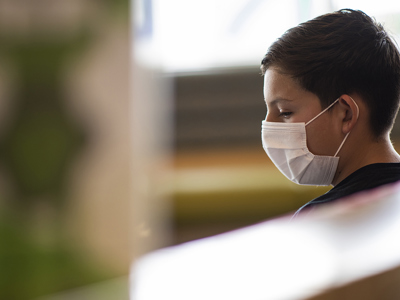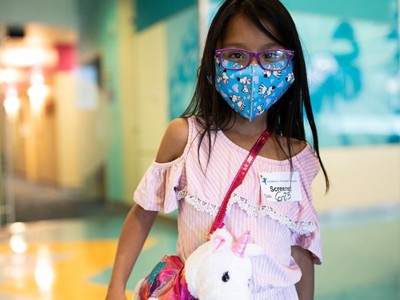- Doctors & Departments
-
Conditions & Advice
- Overview
- Conditions and Symptoms
- Symptom Checker
- Parent Resources
- The Connection Journey
- Calm A Crying Baby
- Sports Articles
- Dosage Tables
- Baby Guide
-
Your Visit
- Overview
- Prepare for Your Visit
- Your Overnight Stay
- Send a Cheer Card
- Family and Patient Resources
- Patient Cost Estimate
- Insurance and Financial Resources
- Online Bill Pay
- Medical Records
- Policies and Procedures
- We Ask Because We Care
Click to find the locations nearest youFind locations by region
See all locations -
Community
- Overview
- Addressing the Youth Mental Health Crisis
- Calendar of Events
- Child Health Advocacy
- Community Health
- Community Partners
- Corporate Relations
- Global Health
- Patient Advocacy
- Patient Stories
- Pediatric Affiliations
- Support Children’s Colorado
- Specialty Outreach Clinics
Your Support Matters
Upcoming Events
Colorado Hospitals Substance Exposed Newborn Quality Improvement Collaborative CHoSEN Conference (Hybrid)
Monday, April 29, 2024The CHoSEN Collaborative is an effort to increase consistency in...
-
Research & Innovation
- Overview
- Pediatric Clinical Trials
- Q: Pediatric Health Advances
- Discoveries and Milestones
- Training and Internships
- Academic Affiliation
- Investigator Resources
- Funding Opportunities
- Center For Innovation
- Support Our Research
- Research Areas

It starts with a Q:
For the latest cutting-edge research, innovative collaborations and remarkable discoveries in child health, read stories from across all our areas of study in Q: Advances and Answers in Pediatric Health.


Infectious Disease
Multisystem Inflammatory Syndrome in Children (MIS-C) Associated with COVID-19
We see more, treat more and heal more kids than any other hospital in the region.

Get Care Now
From emergency to urgent care to 24/7 pediatric advice, we’re here to help in the heat of moment.
What is MIS-C?
In May 2020, many countries that had an outbreak of coronavirus disease 2019 (COVID-19) began reporting an inflammatory syndrome in some children. This is now called multisystem inflammatory syndrome in children, or MIS-C for short.
MIS-C is a shock-like condition in which different body parts can become inflamed including the heart, lungs, kidneys, brain, skin, eyes or gastrointestinal (digestive) organs. MIS-C shares some clinical symptoms seen in Kawasaki disease, an illness that is most common in young children.
The most prominent symptoms of this inflammatory syndrome associated with the coronavirus are prolonged high fever and gastrointestinal symptoms such as abdominal pain, diarrhea and vomiting. Children may also develop a rash or red eyes.
What causes MIS-C?
We do not yet know what causes MIS-C. However, we know that most children with MIS-C had the virus that causes COVID-19 or had been around someone with COVID-19 in the previous 2 to 4 weeks.
Most experts think that MIS-C is caused by the immune system reacting to having had an infection with SARS-CoV-2, the coronavirus that causes COVID-19. Pediatric infectious disease specialists and scientists are learning more about COVID-19 and MIS-C and how to treat them every day.
Kids and MIS-C
As the name implies, MIS-C affects children and adolescents under 21 years old. Most kids and teens diagnosed with MIS-C had mild symptoms of COVID-19 or were asymptomatic, meaning they had no symptoms at all.
Black and Hispanic children have been disproportionally impacted by MIS-C. This could be because people in these groups may be at greater risk of being exposed to COVID-19 or that they have a genetic predisposition. We are still learning about MIS-C and how it affects kids, so we don’t know why some children have gotten sick with MIS-C and others have not.
Though this inflammatory syndrome first appeared in people under age 21, several cases of this condition have been reported in adults. This is called MIS-A, short for multisystem inflammatory syndrome in adults. The condition is much less common in adults than in kids.
Yes. MIS-C can be serious, even deadly, but most children who were diagnosed with this condition have gotten better with medical care.
Children’s Hospital Colorado has seen and treated cases of MIS-C. Fortunately, parents can be reassured that MIS-C is rare and there are existing treatments that have been successful in making kids better.
The best way to prevent MIS-C is to avoid exposure to COVID-19. Families should take precautions against the coronavirus by practicing the following preventive measures together:
- Getting vaccinated as soon as you are eligible
- Knowing when to wear a mask or face covering
- Avoiding large or crowded gatherings and ensuring proper ventilation when possible, especially when transmission is high in your area
- Cleaning hands frequently and thoroughly
- Staying home when you are sick
- If you feel sick, getting tested for COVID-19
If your child has had a COVID-19 infection or been around someone who has, keep in mind that MIS-C is rare and there is no need to panic. Keep an eye out for symptoms and call your child’s doctor if you have concerns.
Signs and symptoms
Stay in touch with your child’s doctor and contact them right away if your child is showing symptoms of MIS-C.
When to go to the emergency room
Call 911 and get emergency care right away if your child is showing any of these emergency warning signs, which could signal MIS-C or another serious condition:
- Trouble breathing
- Pain or pressure in the chest that does not go away
- New confusion
- Inability to wake or stay awake
- Bluish lips or face
- Severe abdominal pain
Most children have developed MIS-C between 2 to 4 weeks after being infected with the coronavirus that causes COVID-19. However, some children who develop MIS-C did not have symptoms of COVID-19.
Tests and diagnosis
Doctors may do certain tests to look for signs of inflammation or other health problems. These tests could include:
- Blood tests
- Chest X-ray
- Heart ultrasound (echocardiogram)
- Abdominal imaging, like an ultrasound or computed tomography (CT) scan
Treating MIS-C
Doctors may provide supportive care for symptoms (medicine and/or fluids to make your child feel better) and may use immune globulin (IVIG), infliximab, steroids or other medications that strengthen the immune system that are used for Kawasaki disease and toxic shock syndrome. Fortunately, most children have responded well to those treatments.
Most children who become ill with MIS-C will need to be treated in the hospital. Some will need to be treated in the Pediatric Intensive Care Unit (PICU).
Most kids with MIS-C will be in the hospital between 3 and 7 days. However, this depends on every child and how quickly they respond to treatment.
Yes. Doctors in our Infectious Disease Program are experts in treating infectious conditions in children, including COVID-19 and MIS-C. Multiple pediatric specialists are likely to help care for patients with MIS-C; these include infectious disease, cardiology, hematology, rheumatology and critical care doctors.
Children who have recovered from MIS-C should receive checkups at 2 weeks and 6 weeks after they leave the hospital. At Children’s Colorado, our experts in Kawasaki disease and MIS-C will follow up with these patients.
During the visit, doctors will take samples for laboratory testing and will perform an echocardiogram to check on the patient’s heart. This is to ensure that the child has healed and is returning to normal health. If any test results are abnormal, the doctor will determine whether additional follow-up care is needed. Because this is still a relatively new disease, we also see children one year after they leave the hospital to make sure everything is going well.
Additional resources
COVID-19 and MIS-C are new conditions. We are learning more about them as additional scientific evidence becomes available every day. This means that health guidance may change as we learn more about how the coronavirus spreads and how to treat it.
We will update this webpage regularly as we learn more about MIS-C. We recommend the following trusted resources for additional information during the pandemic:
- Centers for Disease Control and Prevention (CDC): Information and resources on the pandemic from the public health authority in the U.S.
- Colorado Department of Public Health and Environment (CDPHE): COVID-19 resources from Colorado’s health department
- HealthyChildren.org: Information about MIS-C for parents from the American Academy of Pediatrics (AAP)
- World Health Organization (WHO): COVID-19 information for the public from the global health authority
FAQs about MIS-C
The CDC is tracking reports of MIS-C in the United States. MIS-C is rare, but serious.
Please see our resource on COVID-19 in children to learn what we know about SARS-CoV-2 and how it is affecting children and teens.



 720-777-0123
720-777-0123






